From women’s prison to unmissable one-off boutique hotel
A WWII-era jail in Berlin has been liberated to create an inn that’s a monument to heroines, a luxury urban retreat – and a home for modern art. From the upcoming summer issue, out on October 14.
Berlin both intrigued and scared me when I arrived for my first stint here as a young Australian journalist in the early 2000s: all that history, the graffiti-covered ruins of gutted buildings, the gruff Berliners.
Curiously, every time the once-divided city drew me back over subsequent years, I found myself drawn to yet another dingy bunker or dark basement. Many were claimed by artists, squatters and partygoers, who ended up transforming them into some of the world’s most sought-after and notorious bars, clubs and galleries.
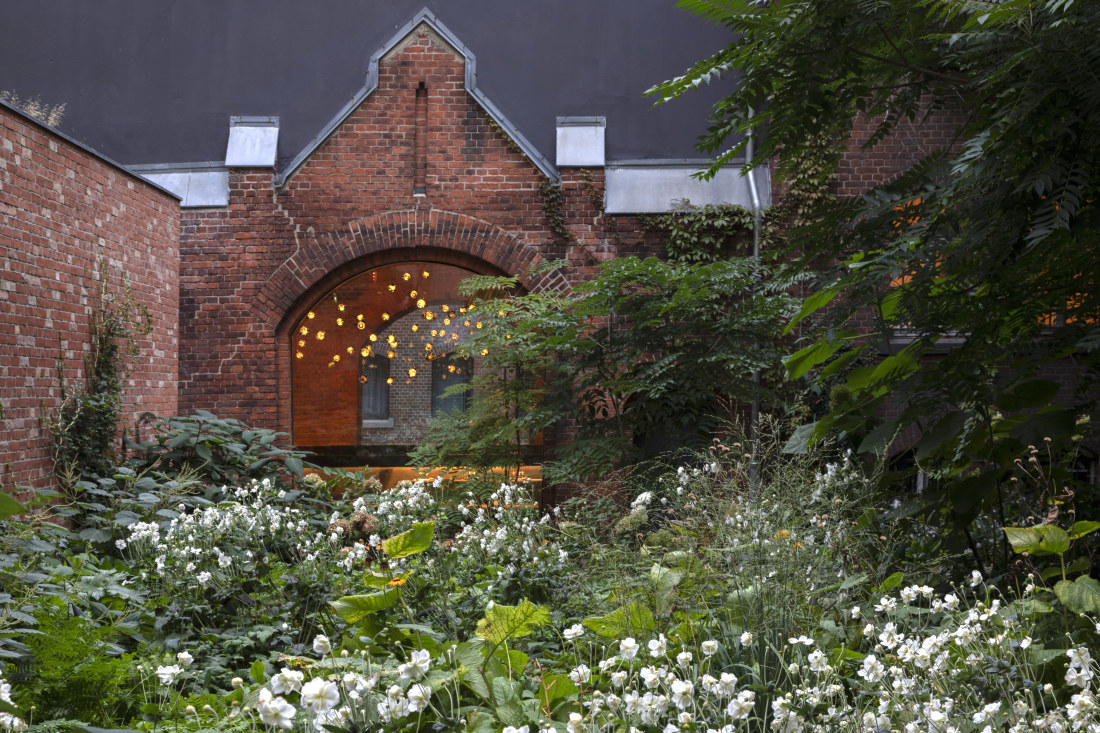
The garden courtyard of Wilmina, the former jail turned design hotel.
Two decades on, with investors having snapped up most abandoned lots, you might think that the so-called “city of spies” would be running out of ways to disguise itself. Indeed, when Fin Magazine asked me to check out a former prison for female freedom fighters-turned design hotel, it sounded somewhat contrived.
On receiving the address, I was surprised to see that it wasn’t located in the young, dynamic former east – but in the mothballed western neighbourhood of Charlottenburg, on one of the shabbier main thoroughfares, Kantstraße.
Emerging from the underground, a little further away from the centre of the old “west”, along what was, in the 1940s, one of Berlin’s most bombed streets – past cheap, post-war architecture, Asian supermarkets and second-hand stores – I spot the opulent 1896 facade of the former courthouse and prison. Guten Tag, Wilmina.
The imposing iron gates close with a loud click behind me, as I retrace the steps of the women imprisoned here for opposing the Nazi regime. But on the other side, through a set of heavy doors and across the cobblestones of one hidden courtyard after another, I finally arrive in a serene ivy-filled garden.
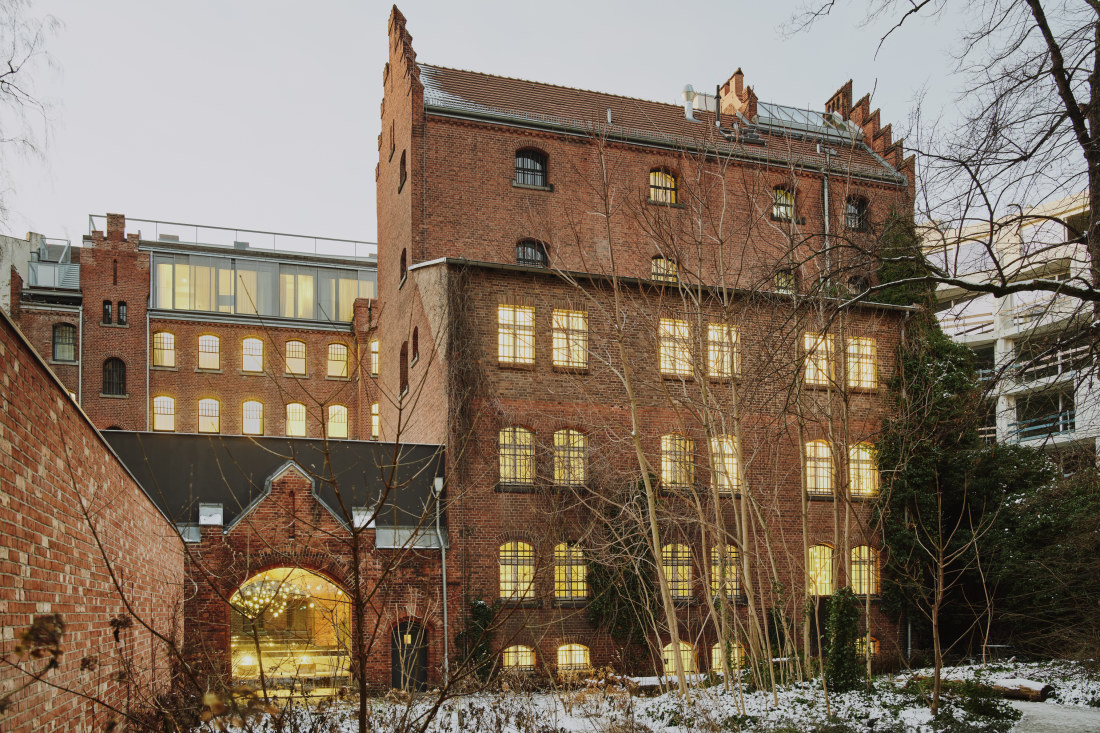
Cosy rooms have replaced cells but the heritage remains.
Wilmina is owned by Almut Grüntuch-Ernst and Armand Grüntuch, two of Germany’s most respected architects. Over the past decade or so, the couple has transformed this building for a new purpose and audience – without shying away from the past.
Actually, they literally shine a light on the tools of the terror state – even preserving one of the former prison cells (it’s been set up as a mini museum). And the couple has established a co-operation agreement with the German Resistance Memorial Centre in Berlin, to continue collecting historical records related to the prisoners of Kantstraße 79.
They’ve also flooded the space with natural light, flushing out the ghosts of the past. Whitewashed walls add illumination, accompanied by an abundance of Bocci pendant lights, their small glass spheres dangling from the cavernous sanctum.
Behind the once-thick walls and impenetrable doors, 100 prison cells have been transformed into 44 cosy hotel rooms. The high, unreachable windows have been extended downwards to provide a view outside for the first time. But the original prison bars have been left hanging midway – another reminder of the building’s history.
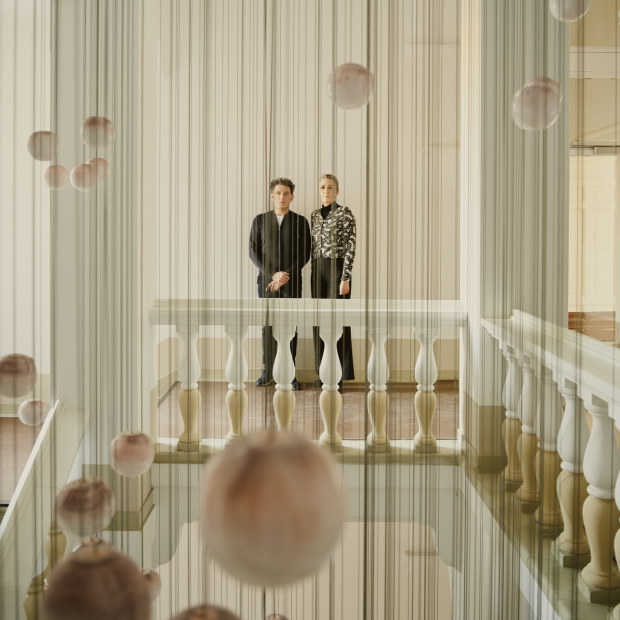
Wilmina owners Armand Grüntuch and Almut Grüntuch-Ernst.
The criminal courthouse now hosts temporary art exhibitions. An impressive permanent piece is the geometric metamorphosis of Japanese ink, tattooed onto the ceiling of the main staircase by French artist Laurent Ajina.
Grüntuch-Ernst and Grüntuch were not the first to tackle this project: the original developer gave up on the huge task of repurposing the heritage-listed building, with its overly wide walls and tiny cells, believing it to be unsuited to being a hotel. The architect couple bought the property themselves, launching the invasive operation in 2012.
In some ways, the hotel has merely been reassembled, not reinvented: each brick that was removed to enlarge windows, thin out walls, take out parts of floors and join cells, was used elsewhere in the hotel. In this way, Grüntuch-Ernst and Grüntuch managed to construct an entirely new extension on the grounds of the gated prison lock yard, which is now the restaurant.
This “sensitive intervention”, as the architects put it, “awakened a building from its dormant state and transformed it into a lively and, at the same time, contemplative place”. The project became so much a part of the couple’s life that they decided to run the hotel themselves once it opened in April 2022; it quickly became a cross-generational affair, with their adult children taking time off from studies to support the launch.
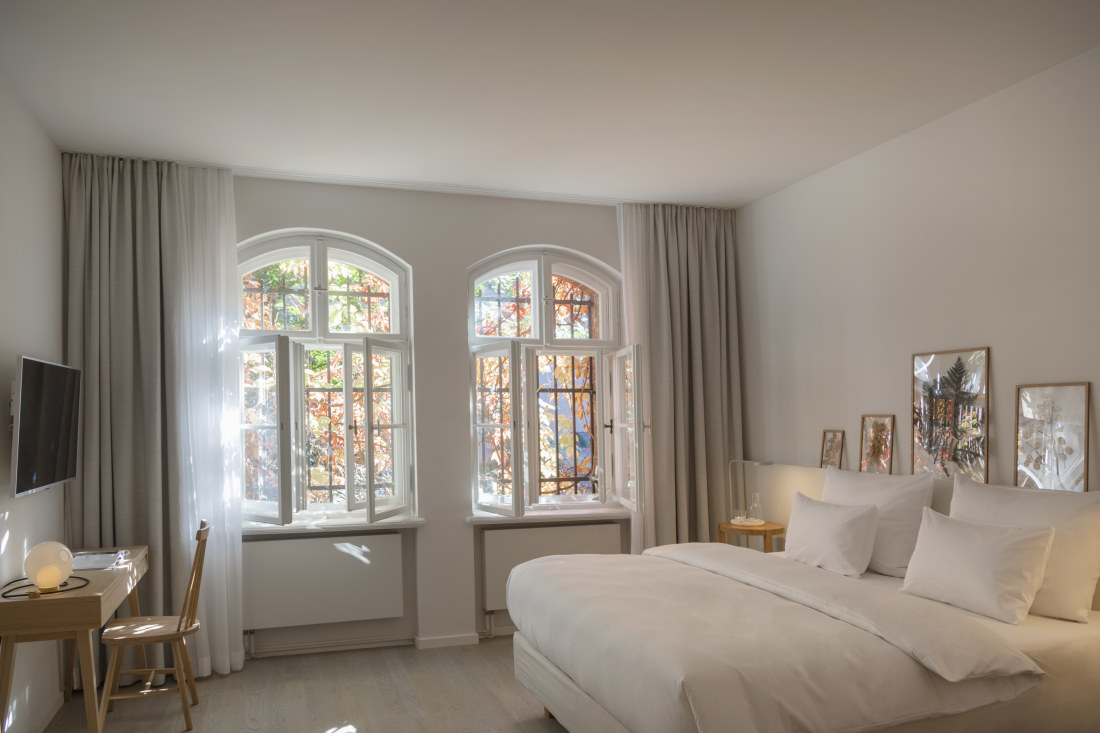
A room with a view to the main garden.
So far, so good it seems: Wilmina won Germany’s Hotel Property Award in 2022, followed by the 2023 German Sustainability Award for Architecture.
Still, I do wonder whether I’ll be able to sleep here tonight, despite being perched up in an airy penthouse. I am determined to relax, taking my time in the Nordic pine-filled sauna and the glass-bottom pool on the hotel’s expansive rooftop deck.
Dinner at in-house restaurant Lovis requires a walk back through the gardens and courtyards, down a few steps, past a cocktail bar (also tattooed in Japanese ink), and huge terrarium-like windows, this time revealing a soft tree fern. After turning the corner, I’m standing in a hall, the floors made from Austrian hardwood.
Lovis’ head chef Sophia Rudolph explains “the interior is quite purist and speaks for itself. The food is supposed to do the same and we want to focus, first and foremost, on the produce and the aromas, rather than on other outside influences.”
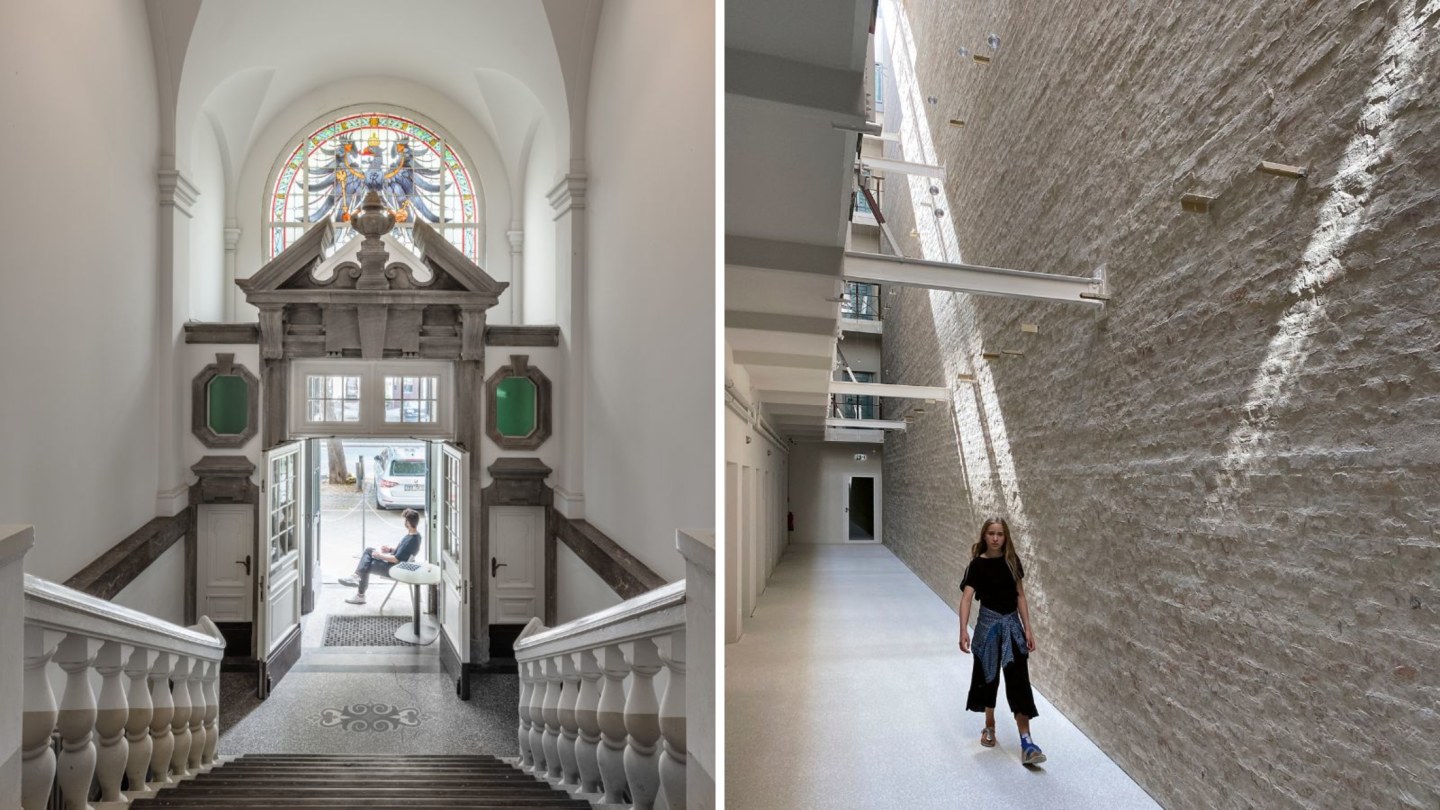
The gallery entrance; illumination flushes out ghosts of the past.
Rudolph uses seasonal, regional produce to whip up contemporary German cuisine: miso-glazed eggplant, ribs in a sticky tamarind sauce. Little wonder Lovis is featured in the 2023 Michelin Guide and was named one of the World’s 50 Best Restaurants in 2022. The wine list traverses the continent, but for me, none of the French or German wines beat the robust Spanish rosé Escabeces Cartoixà Vermell 2021 (of which only 6000 bottles were made).
My concerns about tossing all night are for nought; before I can stew too long on Berlin’s chequered past, I sink into the soft comfort of the Greek-made Coco-Mat bed (made from all-natural materials such as cotton, goose down and pure wool), quickly falling into an uninterrupted eight hours of blissful sleep.
The next day, sitting alone for breakfast, surrounded by books, I’m reminded of the brave anti-fascists, dubbed the “Red Orchestra” by the German Gestapo in an attempt to discredit them as purely communist. I read that Hitler was so outraged by the size of the international network that he demanded their speedy execution, then tried to erase all traces of their existence. About 120 members and associates were arrested, almost half of them women.
There is history here, and pain. This is not just another design hotel, a place to recharge between sightseeing. Wilmina is more than a hotel, and staying here, I feel far more than merely a guest.
There is something humbling here: the idea is to enjoy the place for what it has become, while honouring the past. It’s no accident the place is filled with sunlight: it is the best medicine.
The author was a guest of Wilmina.